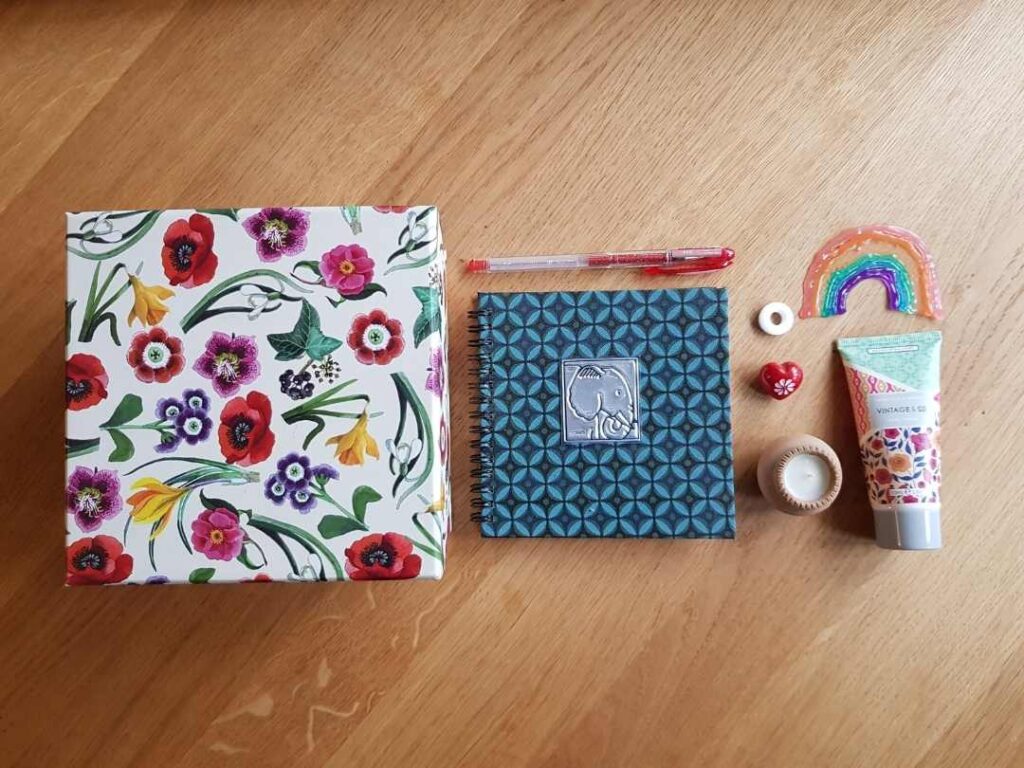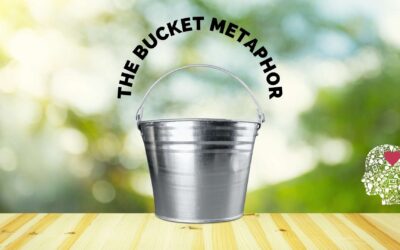Grounding techniques can be a powerful way of helping us stay steady in the midst of an emotional storm (see my previous post for the ‘what, why and how of grounding’). Although grounding techniques are relatively simple, they can be hard to do. Sometimes it can be really helpful to have some concrete reminders of the process to help us stay present and anchored. Creating a grounding kit is a great way to keep these queues handy and accessible when you need them.
Key elements of a grounding kit

- A container
Choose some kind of container to keep your kit in. This could be a box, basket or a little bag. You might want to have one at home that could contain larger items, and one to keep with you when you’re out and about. Choosing a container that you really like can create a sense that this is an important and valuable process, and communicate compassionate for yourself in moments when this feels far away.
- A reminder of the process
Grounding techniques involve three processes, summarised by the anagram ACE – acknowledge, connect, and engage:
A – acknowledge your experience – notice what thoughts, feelings, memories are present for you right now. Try to name them if you can.
C – connect with your body – intentionally move your body, noticing that it is containing all your thoughts and feelings. This can be as simple as pushing your feet into the ground, or doing some basic stretching.
E – engage in the world around you – notice the room around you and engage your senses. What can you see, hear, smell and taste?
Include something in your kit to remind you of this process, like the prompt card below. You can download it here.

- A pen and little notebook
It can be helpful to write down or draw thoughts, memories or feelings as you become aware of them. You could choose a special pen and notebook, or just include some loose pieces of paper.
- Objects to activate your senses
This will help you to connect with your body. You might want to include items that tap into a range of senses, for example:
- Movement – a reminder to stretch, take deep slow breaths, or push your feet into the ground
- Touch – a little pebble, a stress ball, hand cream
- Smell – an essential oil, a candle
- Taste – strong mints
It’s important to notice how your body feels when doing these things, and how your difficult thoughts and feelings can exist alongside these experiences. Your thoughts and feelings are present, but there is also a body around them, that you can control and that can experience a range of things.
- Reminders of the things that matter most
Include some symbols of things that are important to you, to help you keep engaged with the world beyond the emotional storm you currently find yourself in. This could be a note to yourself, a photo, or an object that has meaning for you. You can be as creative as you like and include anything that you know will have enough resonance and meaning to reach you when you’re struggling.
How to use a grounding kit
Once you have put your kit together keep it somewhere you know you’ll be able to find it when you need to. When you notice yourself being caught up in an emotional storm, being hooked by difficult thoughts and feelings, grab your kit and use it as a prompt to practice grounding.
Remember that grounding is not the same as distraction, and its aim is not to make you feel better. The purpose is to keep you steady so that you have more freedom to decide how to respond in the face of challenging circumstances – rather than being pushed around by your thoughts and feelings. Sometimes working through this process can help our mood, and if this happens enjoy it. But don’t feel bad or criticise yourself if you don’t feel better. If you do notice self-critical thoughts, you can always use grounding to help keep yourself present in the face of these.
Practise, practise, practise
Like any skill, grounding and the dropping anchor technique take practise. It’s always best to practise during times of low stress, so that you can more easily draw upon these skills during tougher times. So if you think a grounding kit could be a helpful tool, commit to putting one together and trying it out.
As you practise with the kit you might find that there is one particular item that is most helpful for you, or that really symbolises the process. If that’s the case it can be helpful to keep this object with you when you’re not at home (e.g. in your pocket), so you can access it easily.




